Hello y’all, welcome to my trees page! I took a short walk up the Olentangy trail and photographed many trees I could recognize. I had to use my phone’s camera, which doesn’t have the best quality, so I apologize in advance. Most of the tree facts are taken from the Silvics of North America agricultural handbook maintained by the U.S. Department of Agriculture.
American Beech
(Fagus grandifolia)
The first tree we’re looking at is the American beech (Fagus grandifolia). It is the only one of its genera in North America! Characterized by smooth, pale bark, it is highly abundant over the eastern half of the United States and Canada. Often times these trees are marked by knives by hikers in public places due to the smoothness and clarity in the bark, but I would discourage this behavior as it can actually permanently harm the tree!
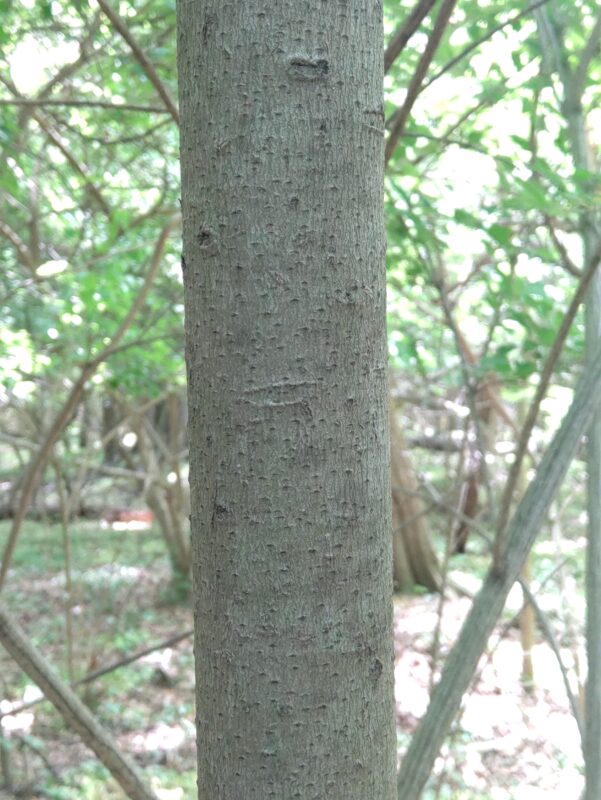
American beech’s smooth bark.
The leaves of the beech tree are alternate, simple and entire. Their most defining characteristic is that their veins run straight and parallel to each other. To help us learn this, my woody plants professor would say “it’s like parking at the beech!” because they almost resemble parking spaces.
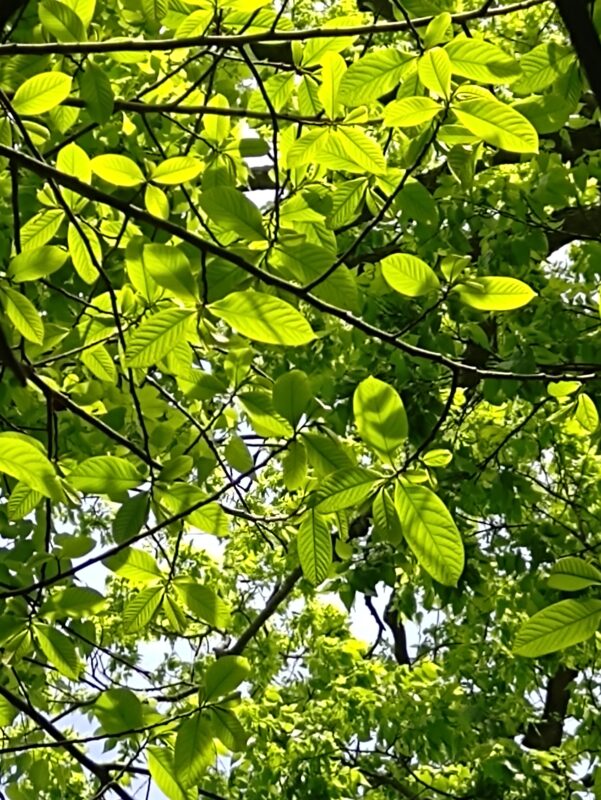
A cluster of beech leaves. If you look closely, you can see the distinct veins!
Black Cherry
(Prunus serotina)
The next tree is the black cherry, characterized by its dark, flakey bark. Old professors would sometimes refer to the texture as “like corn flakes” to help us remember. It is a good tree for wood products and is commercially viable to grow, but much less so than walnut and oaks. Ecologically, many animals rely on the cherry fruit for food such as birds, foxes and bears. The bark has even been used in the southern Appalachians to be used in cough medicines and sedatives!
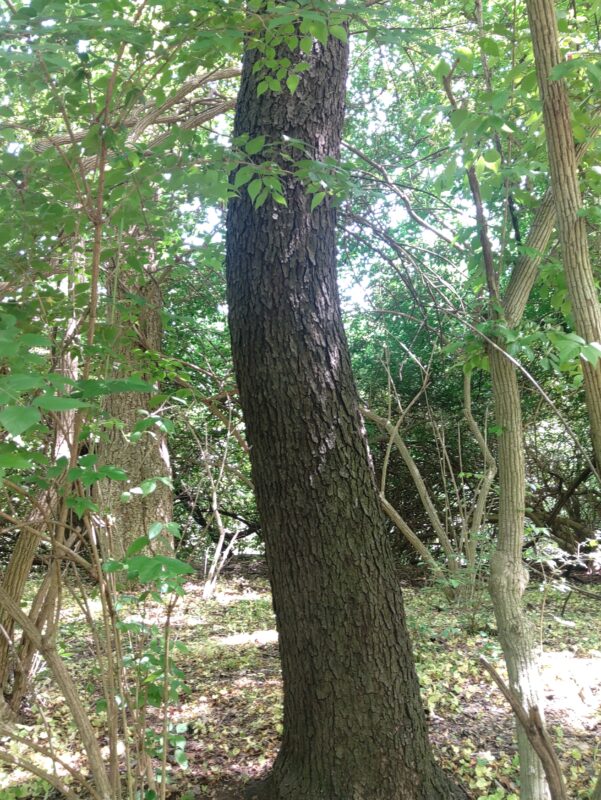
Black cherry bark. Notice how distinct the color and texture is!
Ohio Buckeye
(Aesculus glabra)
The next tree is something near and dear to every Ohioan, it’s our state tree! The Ohio buckeye has been a symbol for our state (and our university) since 1953. On my walk I saw some of the largest buckeye trees I’ve ever seen, they don’t usually get much bigger than 10 inches in diameter. While the bark isn’t very distinctive, the leaves are a dead giveaway: they’re opposite and palmately compound, something we don’t see much of in Ohio.
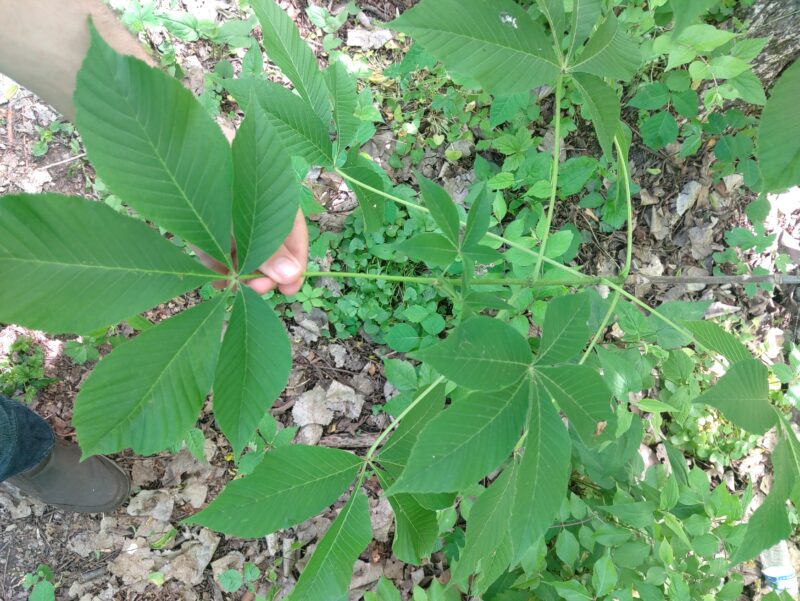
Buckeye leaves
The fruits are often collected by folks who have a lot of state or college pride in Ohio, but they’re also very poisonous. Because of this, and the unpleasant smell from crushing the leaves, landowners outside of Ohio actually seek to eradicate the tree!
American Hackberry
(Celtis occidentalis)
This next tree was a favorite of mine while I was taking my woody plants identification labs because of how distinct it is. Hackberry’s bark is perhaps the most defining characteristic of the tree, it has a rough almost wartlike appearance. Although it may not be the prettiest, that feature probably saved my grade more than once. The tree does produce a fruit, which is eaten primarily by birds. In some parts of its range, fox squirrels have been known to feed on the fruits, and galls on the bark!
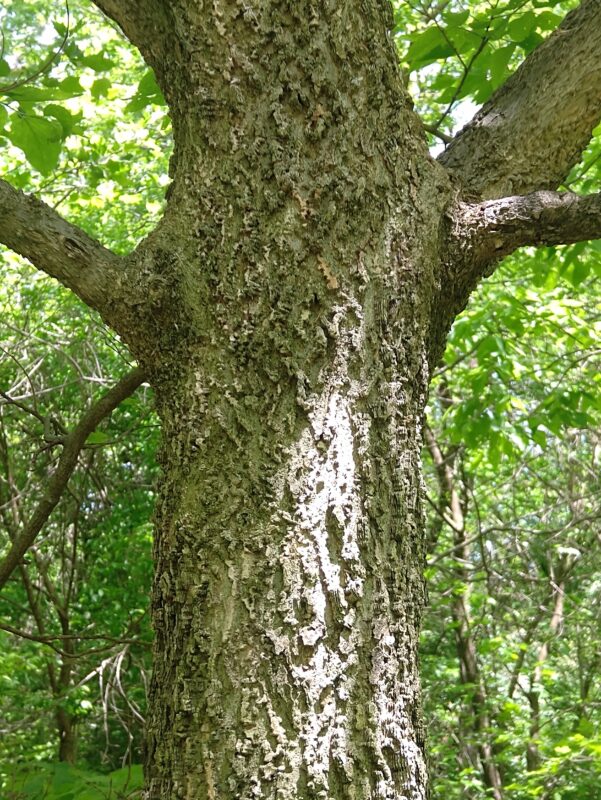
American hackberry’s defining gall-like bark
Honeylocust
(Gleditsia triacanthos)
My actual favorite tree is this next one, honeylocust. I had originally mistook its opposite pinnately compound leaves for a walnut tree, especially because of how many leaflets it had. It was also a fairly young tree, so the big honeylocust giveaways hadn’t grown in yet.
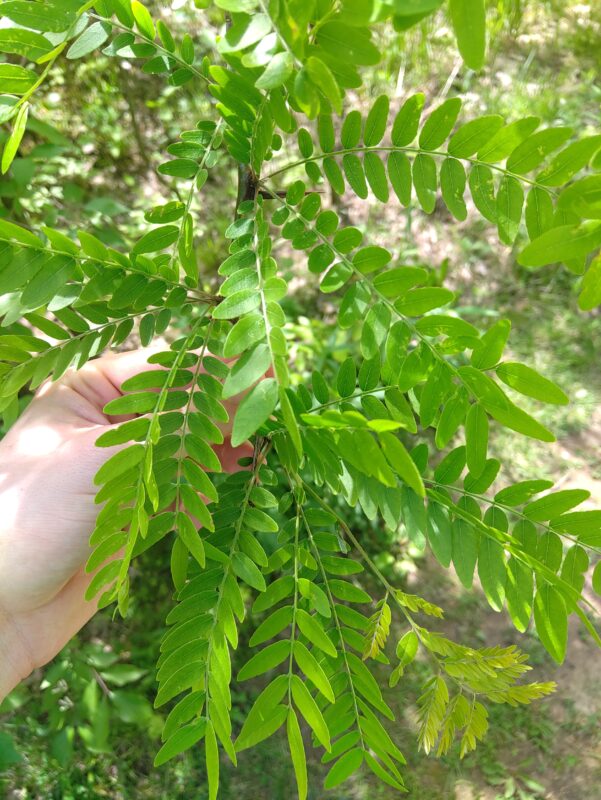
Honeylocust leaves.
They look very similar to walnut leaves, especially on young trees.
Honeylocust is also known as thorned honeylocust because of, you guessed it, the massive thorns that are all throughout the tree. When matured, these trees develop huge clusters of thorns on the main stem to pair with the others on the branches. Thornless varieties do exist and are widely planted as ornamental trees! Their fruits also feed a wide variety of animals, including livestock like cattle and hogs.
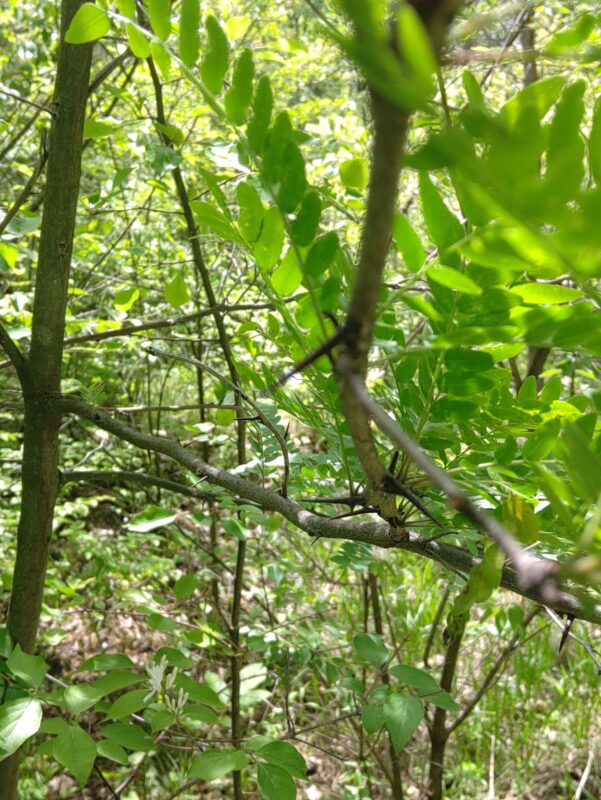
The branches of honeylocust trees are covered in these long, sharp thorns
Amur Honeysuckle
(Lonicera maackii)
The next plant is more of a shrub than a tree, although there certainly were ones on the Olentangy trail that were large enough to be mistaken for a tree. Amur honeysuckle is an invasive species found all over Ohio. It outcompetes native shrubs like spicebush and doesn’t usually allow anything to grow beneath it. Honeysuckles are also what’s called ecological traps, for two big reasons. First, they appear like good habitat for cardinals, but are actually very poor at providing shelter and protection from predators, so any cardinal that nests in one is easy prey. Second, the berries are also very attractive to cardinals, and when the birds eat them, their coats become redder and thus more likely to attract mates. However, the berries are very poor in nutrition compared to many native species available.
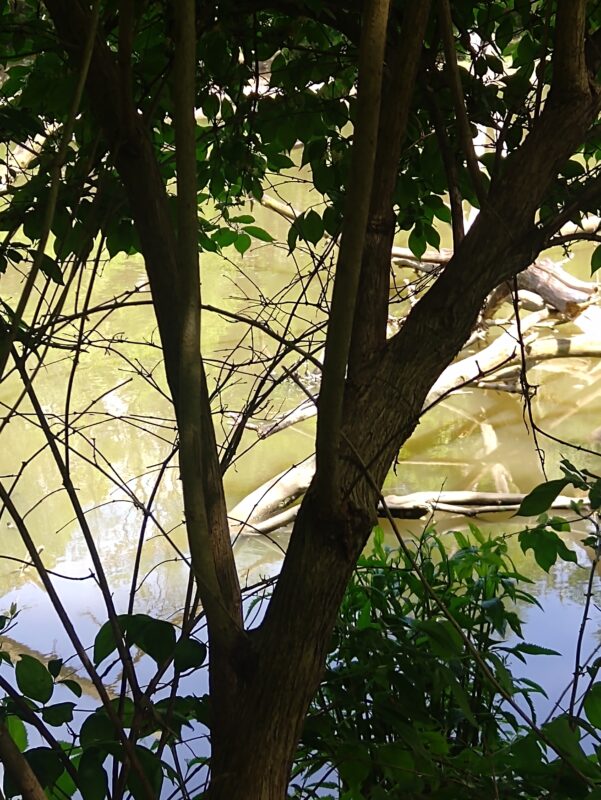
Honeysuckle bark appears shredded. The plant also usually has many main stems.
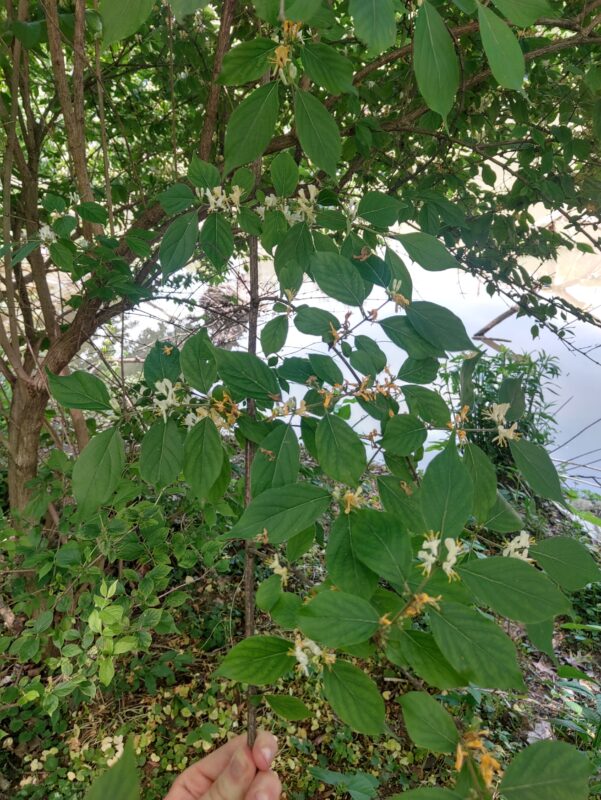
The flowers were in bloom when I was out. While pretty, it’s important to remember the plant’s potential for harm.
Northern Red Oak
(Quercus rubrum)
Back to native species, this next tree one of commercial and ecological significance. Northern red oaks can be identified by the vertical stripes on the bark, and an alternate, simple and lobed leaf with protruding veins. The wood is used for all kinds of products due to its strength and durability. Like other red oaks, they produce a mast seeding event roughly every 2 years, and their acorns require about 15 months to ripen. Red oak acorns have a much higher tannin content than white oaks and act as predator deterrent due to their bitter taste.
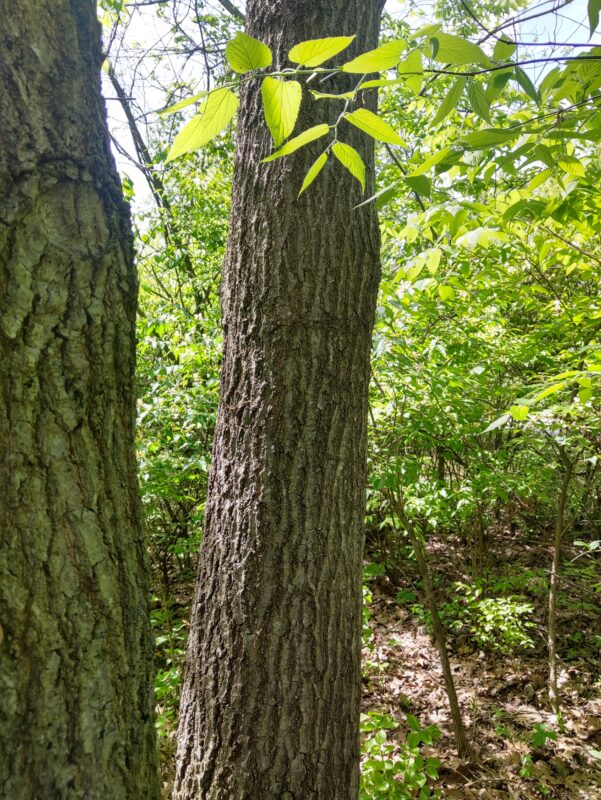
Red oak bark, easily identifiable due to the smooth-ish bark and vertical stripes.
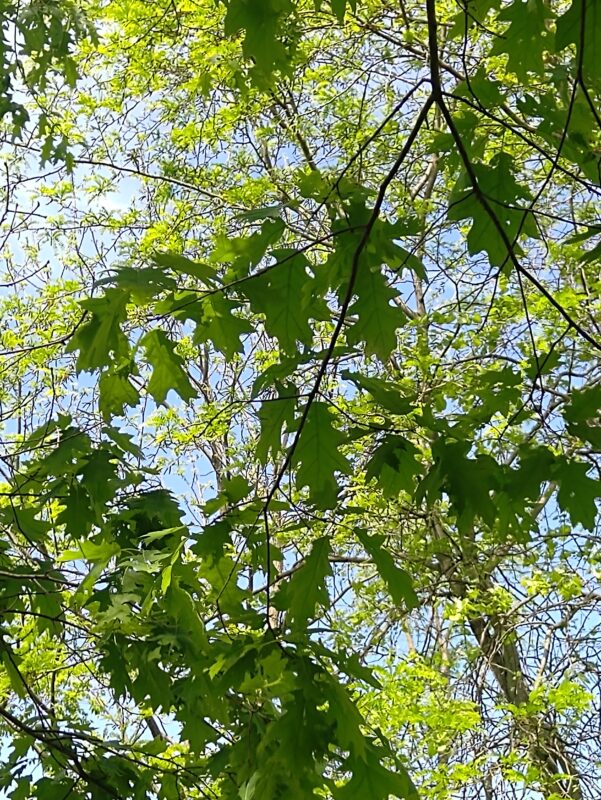
Red oak leaves, lobed but with small spikes at the ends
American Sycamore
(Platanus occidentalis)
Last but not least we have the American sycamore! It is also a very easy tree to identify, even in the winter. Near the base, the bark can appear flakey, but about halfway up the tree, the bark begins to peel off and you’re left with a ghastly white surface. The leaves appear almost like maple leaves and are 3-lobed. What sets them apart is that maple leaves can also be 5-lobed, and their lobes are sharper and shaped more like V’s, whereas sycamores are closer to U’s.
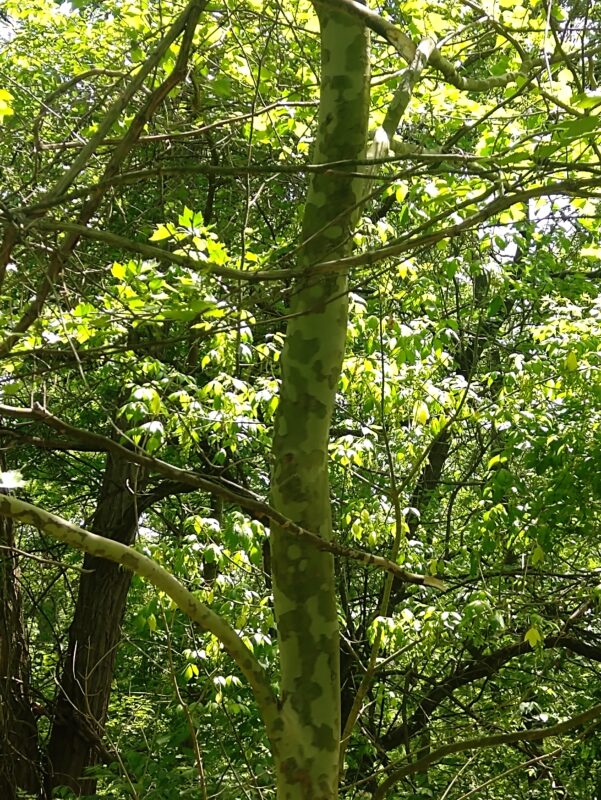
Sycamore bark near the transition point between flakey and white bark.
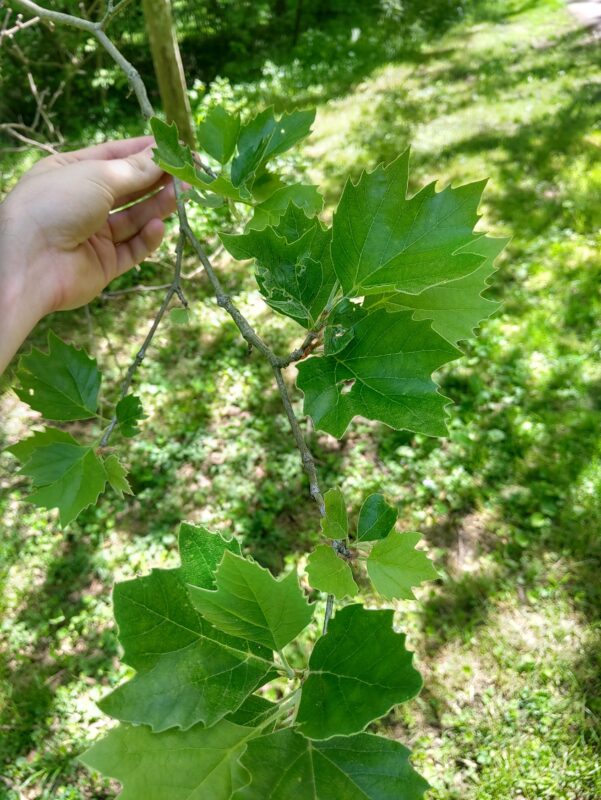
Sycamore leaves
Sycamores have a large, dense crown and grow very large relatively quickly. For these reasons, humans have begun planting them for shade and more recently, for biomass in the southeast.
